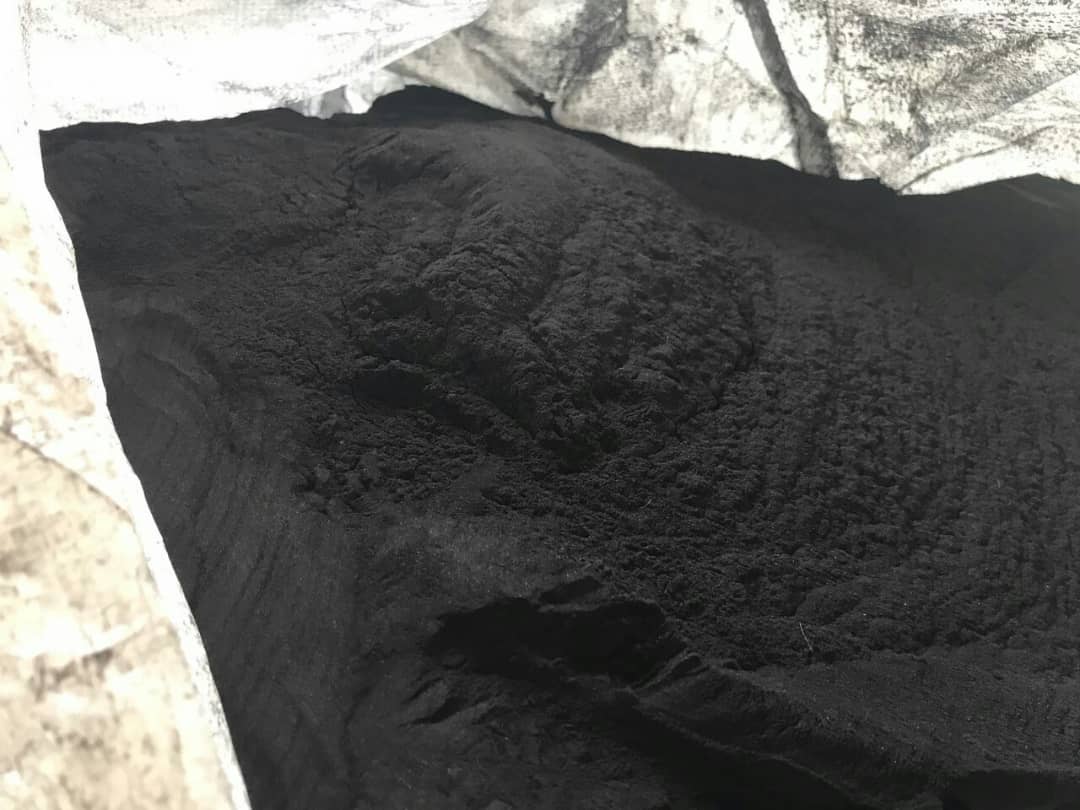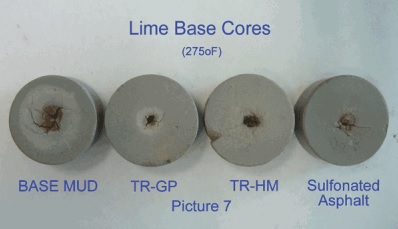shale stabilization

Analysis Confirms the Effectiveness of Gilsonite as the Offshore Shale Stabilization
An independent evaluation has verified the effectiveness of Gilsonite as an HSE acceptable and high-performance inhibition and fluid loss control additive for water-based fluids used to drill highly reactive shales.
The laboratory analysis of four water-based muds (WBM) compared two blends of treated Gilsonite with sulfonated asphalt, which is a widely used shale stabilization and fluid loss control agent. In the series of tests, lignite/lignosulfonate, KCl, PHPA, and lime-based drilling fluids were examined on a triaxial tester that specifically evaluates the influence of drilling fluids on shale stability under simulated downhole conditions of stress and fluid flow. Depending on the WBM analyzed, the sample muds treated with naturally occurring gilsonite exhibited either marked improvement or equal performance with respect to shale stabilization and fluid-loss control.
Over the years, the development of a WBM that approaches the shale inhibition and other high-performance characteristics of oil and synthetic-based muds has been the long-sought “holy grail” of the drilling fluid industry. While invert emulsions typically are the systems of choice for technically challenging applications, particularly when the targeted formations contain highly reactive shales, their comparatively high unit costs, ever-tightening environmental regulations, logistical issues, and other limitations have spurred the industry to seek alternative aqueous fluid systems.
Advantages in deepwater
The engineering of a high-performance water-based drilling fluid capable of inhibiting reactive shales to maintain wellbore stability is particularly advantageous for young sedimentary basins and in downhole environments featuring narrow fracture and pore pressure gradients, such as are found often in deepwater.
While strides have been made to develop high-performance aqueous systems, R&D efforts continue to focus on cost-effective and environmentally acceptable additives that are proficient in inhibiting water-sensitive shales, thereby preventing the bit balling, accretion, wellbore instability, and low rates of penetration (ROP) resulting from poor shale stabilization. The latest test results verified the capability of Gilsonite as an effective and competitive option to both control fluid loss and inhibit reactive shales.
Comparison of the reduction in erosion and swelling on cores of KCl, lignite, and PHPA water-based drilling fluids tested at 375°F. A high-temperature gilsonite blend was compared to cores from the base fluid and sulfonated asphalt.
Gilsonite is a naturally occurring glossy black asphaltic, solid hydrocarbon resin with a low specific gravity. Various industries have used the material for years as an additive in carbon black dispersing agents, hard resin printing inks for newspapers and magazines, asphalt modifying agent for road paving, and as an additive in sand molds used by the foundry industry.
For more than 60 years, it also has been used in the E&P industry as a versatile additive for cementing slurries and drilling fluids, including use as a fluid loss additive in oil- and synthetic- based drilling fluids.
In some cases, blended gilsonite additives have been documented as saving as much as $1 million per well by resolving differential sticking and consequences of borehole instability, while also reducing torque and delivering exceptional lubricity in deviated wells. Further, gilsonite is non-carcinogenic, thereby delivering HSE advantages compared to sulfonated asphalt and some other shale stabilization blends.
Filtrate invasion is problematic in water-based drilling fluids in that it can destabilize shales and cause myriad drilling problems, including borehole enlargement, stuck pipe, sloughing shale, and excess bridging during trips. Specially treated Gilsonite grades has proven effective to eliminate or reduce filtrate invasion in aqueous drilling fluids in both offshore and onshore applications.
Testing protocol
Historically, owing to the mechanism in which gilsonites and asphalts protect formations, assessing the precise shale stabilization capacity of these materials has been difficult using standard laboratory bench tests. Both of these additives physically shield water-sensitive formations by chemically coating the surface of the wellbore, thereby sealing micro-fractures to prevent, or at the minimum, slow considerably the rate at which a drilling fluid interacts with the formation. Consequently, shale disintegration, or hot rolling, linear swelling, and capillary suction tests do not adequately or consistently demonstrate a fluid’s shale stabilization ability.

Cores from lime-based mud tested at 275° F. The cores show the decline in erosion and swelling generated with gilsonite material (center). Gilsonite was compared against the base fluid (left) and sulfonated asphalt.
Triaxial testing under simulated downhole temperature and pressure has evolved as the preferred approach to determine shale stability. Triaxial testing screens the inhibitive properties of various chemicals, along with the effects of contaminants, viscosifiers, and filtration control additives, on the properties of shale inhibitive drilling fluids. A triaxial tester was selected for the latest series of shale stabilization tests, which also included examinations of the impact of the gilsonites and sulfonated asphalts on rheology, filtration, and lubricity coefficients.
In a triaxial test, the unit is loaded with a representative shale specimen that has been stressed both axially and radically to simulate borehole stress conditions while the fluid being tested is pumped under pressure through a central borehole. A non-stabilizing fluid sample softens, erodes, and eventually collapses the simulated wellbore. The ability of the fluid to stabilize the shale is expressed as the run time before for the specimen begins to fail.
Rather than use shale specimens cut from cores or formation outcrops, the most recent tests relied on reconstructed Pierre II shale samples. Experience has shown that samples reconstructed from drill cuttings or ground shale are more representative of the intrinsic downhole environment, while samples cut from cores often contain small fractures and variations in dip angle and composition, thus generally delivering poor reproducibility.
In preparation for the tests, each drilling fluid to be examined according to established formulations. Two gilsonites, one a 350° F (177° C) softening material and the other rated at 380° F (193° C) were to be examined against comparable sulfonated asphalt samples.
After the base fluids were formulated, the respective test material was added at a rate of 6 lb/bbl. At that point, the rheological, API fluid loss, and lubricity coefficient properties of the muds were obtained both before and after hot rolling at the appropriate temperatures. A Permeability Plugging Apparatus (PPA), which is designed to accurately stimulate and measure downhole static filtration, was used for the high-pressure/high-temperature (HP/HT) filtration test.
Owing to their low specific gravities, both gilsonites and sulfonated asphalts tend to float in drilling fluids. Since a PPA measures fluid loss in the upward position, it is the ideal instrument for testing filtration properties. Both the triaxial and HP/HT tests were conducted only on the fluid samples that had been hot rolled.
For the tests, the Pierre II shale test cores were prepared using compaction pressure of 10,000 psi for 24 hrs, then dried and ground sufficiently to pass through a 10-mesh sieve before screened through a 30-mesh sieve. The material retained on the 30-mesh sieve went to prepare the test cores, with enough seawater added to the compaction cell to ensure the water content of the final cores was +/-8.5% by weight. Each of the cores measured 2 x 1 in. with a ¼-in. the borehole in the center.
The triaxial test conditions entailed:
Radial pressure: 2,500 psi
Axial pressure: 1,200 psi
Pump pressure: 150 psi
Circulating temperature: 125°F (52°C)
Annular velocity: 150 ft/min (46 m/min)
Runtime: To failure or maximum of 18 hrs.
Both gilsonite samples were hot rolled at 350° F and 375° F before going into the Triaxial Tester. To provide a comparative representation at the appropriate temperature, the sulfonated asphalt samples likewise were hot rolled at 350° F and 375° F.

